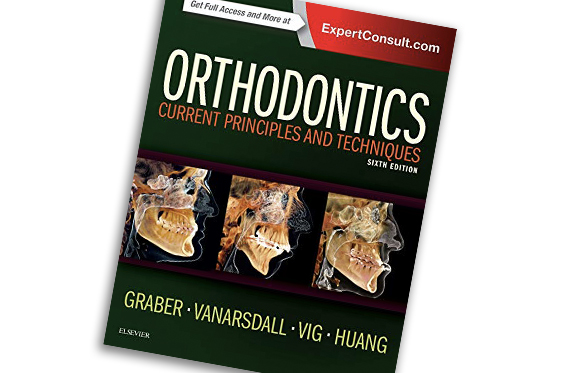I decided to start my blog this year with a review of a popular and important orthodontic text. I initially got aware of this folio traveling across the US in 2016. A huge green book sat on the shelves of several orthodontists I then visited. Only last summer though, I finally laid hands on my own copy of the sixth edition of the Graber’s textbook. Tom Graber was its first editor back in the late 1960s. The current edition has been revised by four prominent academic orthodontists, Lee Graber, Robert Vanarsdall, Katherine Vig, and Greg Huang.
I should start by saying that the book is a comprehensive piece. It covers almost all the areas of the modern-day orthodontics and stretches over one thousand pages. I still haven’t read all the chapters but limited myself to those being of a special interest to me. Therefore, I decided to split my review of this book into three parts and publish them one by one while reading the book to the end. Today I publish an introductory part to share my first impressions…

What’s inside?
The book is a fundamental collection of 36 articles written by the prominent American and European orthodontists. The articles are structured into 7 parts. The first one covers such fundamentals as craniofacial growth and development, biologic response to orthodontic forces, basic biomechanics, etc. The second part comprises of the articles on diagnosis and treatment planning. Next, we have a short part on the mixed dentition followed by the most extensive part on the actual treatment where the main techniques and principles are thoroughly laid down. Part five is dedicated to special considerations such as bonding, management of impactions, iatrogenic effects, etc. The sixth part is on retention. The seventh part is available online only and consists of three chapters which are very different in nature: on serial extractions, functional appliances, and Damon brackets.
A word of caution
The book is considered to be one of the main texts for the US residents. But despite of its irrefutable usefulness, some of its parts, in my view, should be taken with a grain of salt.
I can’t help feeling that for some reason various passages in the book tend to derail from the scientific tracks. For instance, a chapter on the self-ligating brackets fails to clearly acknowledge the absence of scientifically proven benefits of self-ligation. Instead it abounds with very vague statements such as these:
“Self-ligating brackets are a highly active area of technical development, thought-provoking clinical practice, and research.”
“The question of a greatly reduced need for extractions is of real interest and is stimulated by some impressive case presentations…”
It is surprising to read these lines given that there had already been enough evidence to curb any further speculations on the superiority of self-ligation long before the book went in print.
Another confusing statements are presented in a chapter on the acceleration of tooth movement. Here the authors leave us with this dubious conclusion:
“The use of AcceleDent device as an adjunct to treatment with Invisalign is becoming increasingly popular among the clinicians in the United States and in other parts of the world. Although no clinical studies have been published on this subject, numerous personal reports of practitioners indicate that the treatment time can be cut by 50% or more when the AcceleDent device is used during treatment with Invisalign.”
Again, we had had some papers to disprove these claims even before the book went in print and the number of the studies with corresponding findings only grew ever after.
Who should read it?
There are some more questionable areas in the book but, all in all, these are just a fly in the ointment. I think every resident should get acquainted with the book during the postgraduate studies. It should be read without haste, one chapter at a time.
The main ideas and principles of such giants as Charles Burstone, James Vaden, and William Proffit presented at first hand are a great introduction to the specialty for a beginner orthodontist. And if some parts contain some biases – so does the contemporary orthodontic landscape. One should learn to be vigilant from the get go.
Hopefully, my first part of the review of this great American orthodontic textbook doesn’t sound much iconoclastic. In the next part I’m going to focus only on what I like about the book…
You can buy your copy of the book clicking this link. Please note: this is an affiliate Amazon link. Small bonuses I have from this helps me to support Orthodontic Grammar project, whereas you pay just a regular price and not a dime more.

[…] couple of months ago, I published the first part of my review of the famous Graber’s textbook. I mentioned a few flaws in it and promised that in a second part I only look at what I like about […]
LikeLike